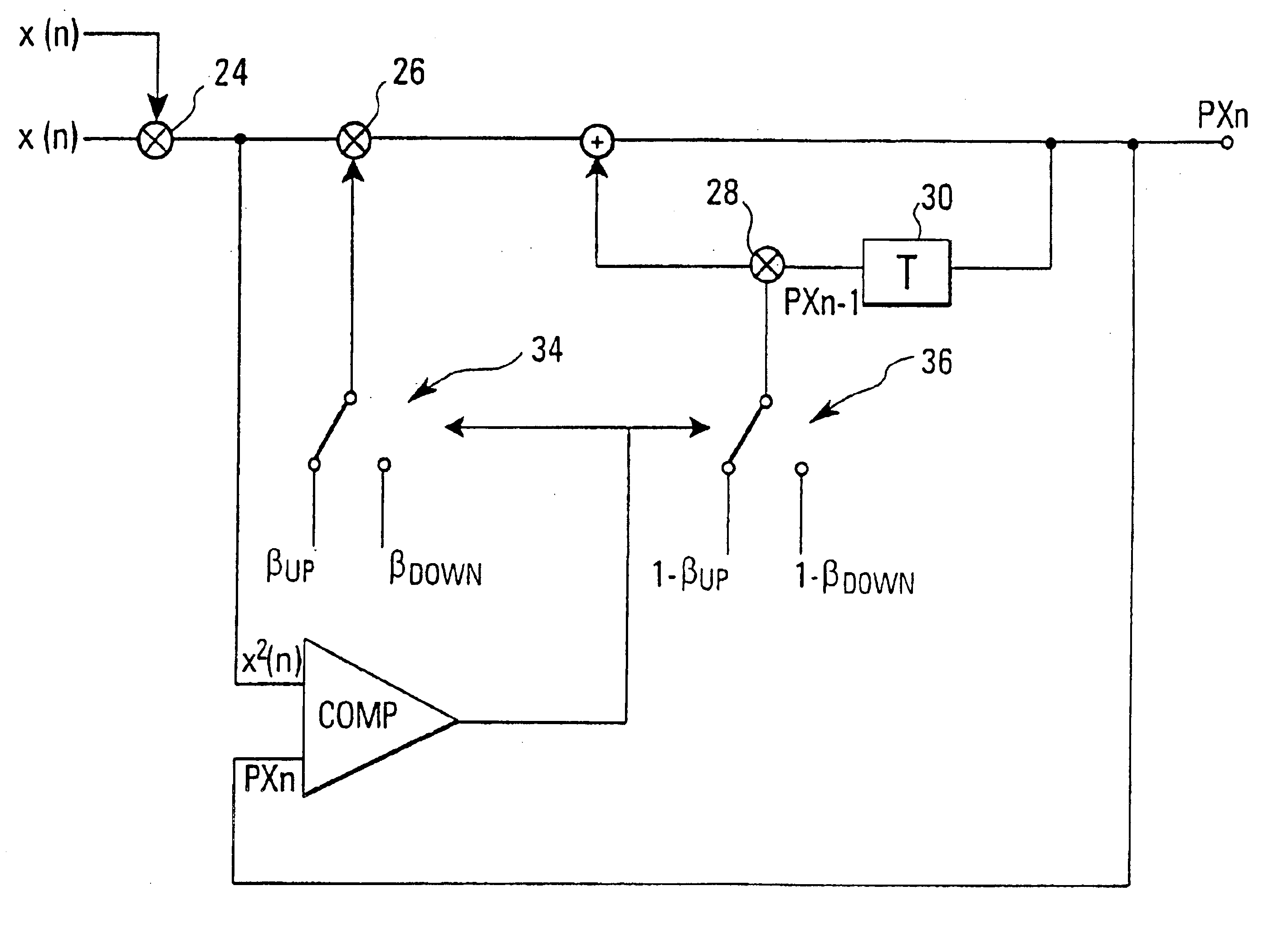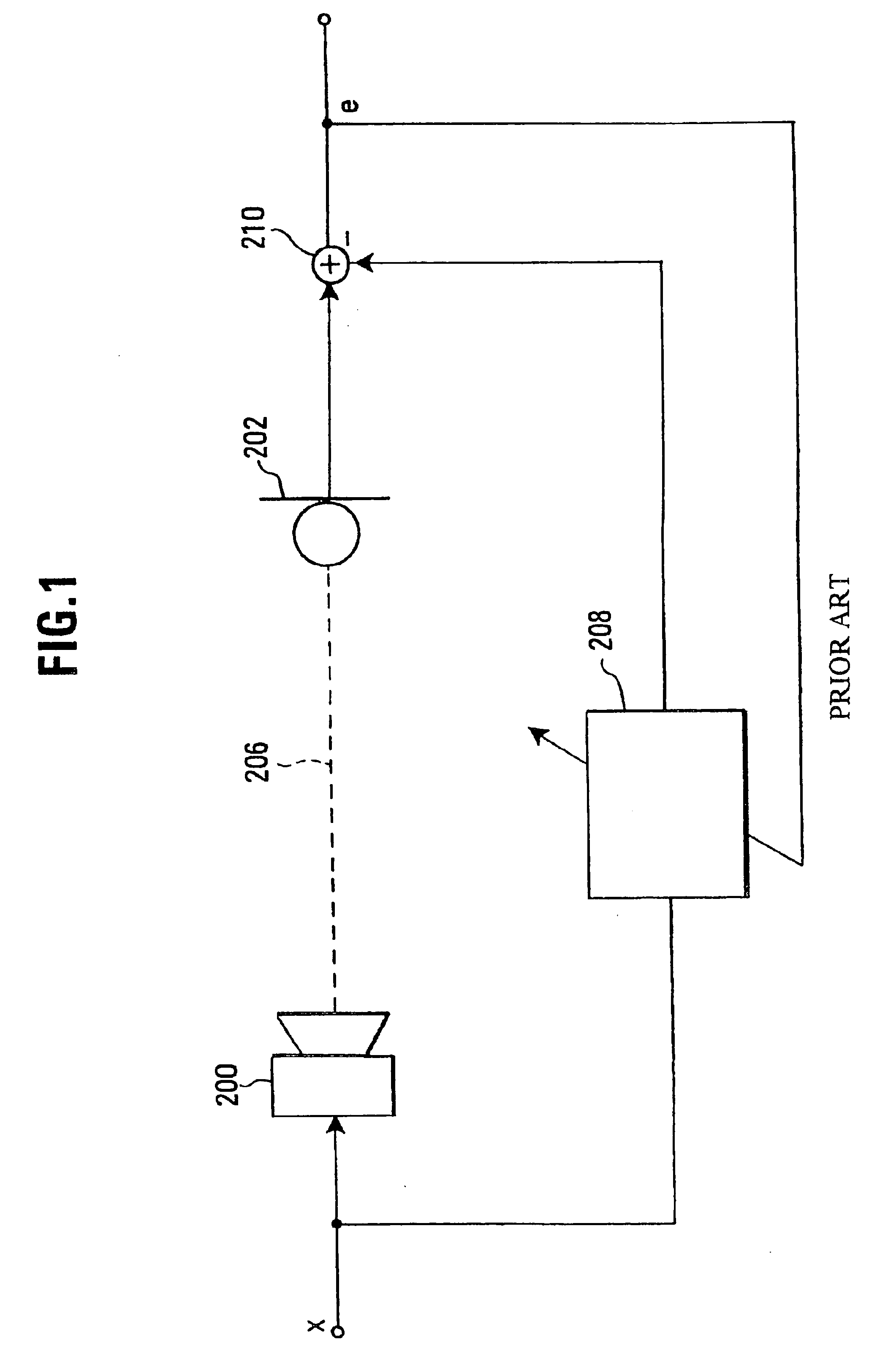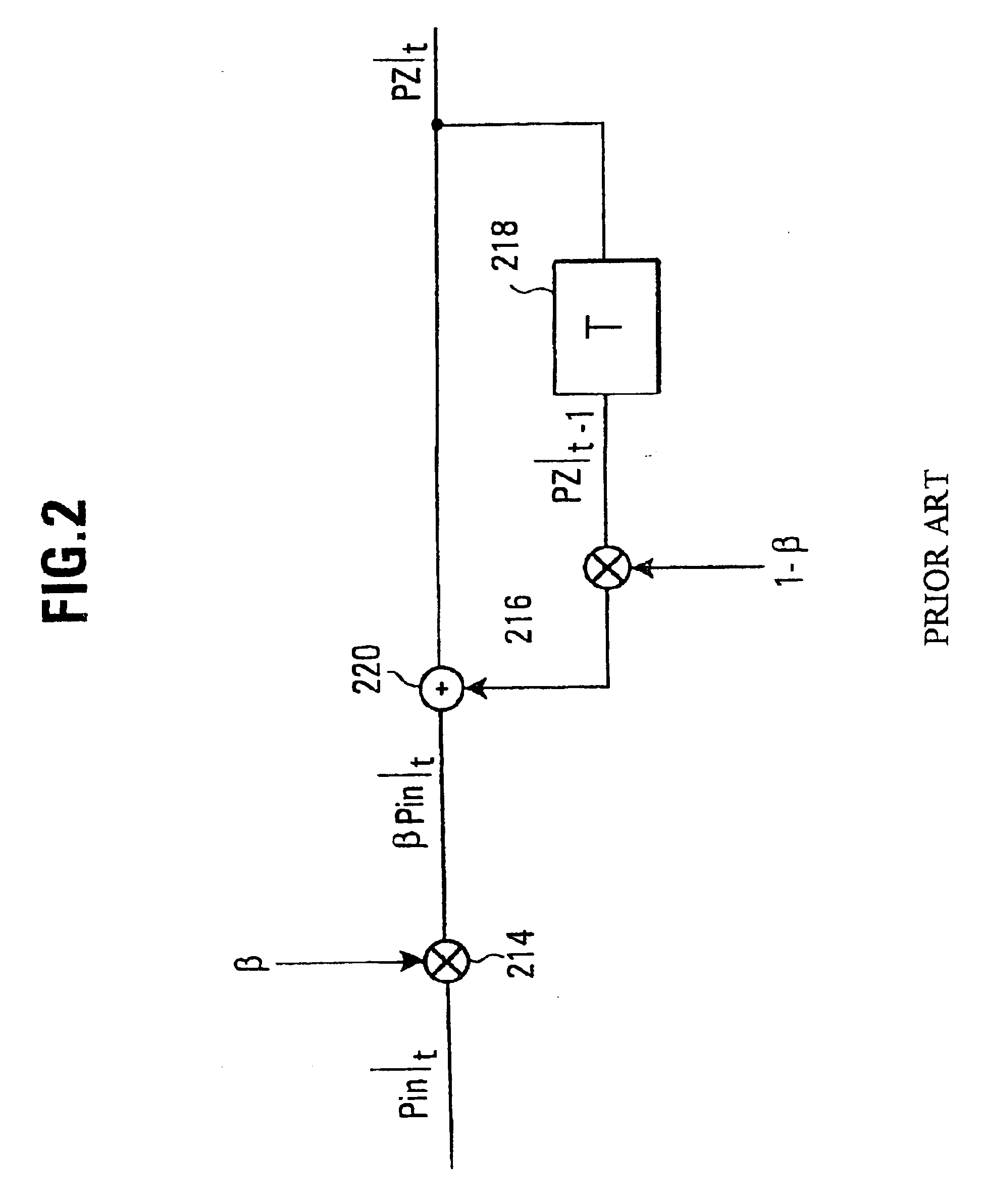Digital adaptive filter and acoustic echo canceller using the same
a technology of adaptive filter and acoustic echo canceller, applied in the direction of substation equipment, energy consumption reduction, high-level techniques, etc., can solve the problems of reduced attention of drivers, increased accidents risk, and low use of free equipment, so as to improve matching, improve performance, and increase comfort
- Summary
- Abstract
- Description
- Claims
- Application Information
AI Technical Summary
Benefits of technology
Problems solved by technology
Method used
Image
Examples
Embodiment Construction
FIG. 3 illustrates one basic concept underlying the different embodiments of the present invention, i.e. the asymmetric estimation of, e.g., an input signal power level. In FIG. 3, only a loudspeaker 10 and a microphone 12 used in, e.g., a hands-free duplex communication device are shown.
FIG. 3 illustrates the transmission behaviour along a path between the loudspeaker 10 and the microphone 12. In case the loudspeaker outputs a short period signal 14 at the propagation along the echo path 16 the related signal received by the microphone 12 will be an echo signal with much longer duration. The same holds true for the envelope 20 of the loudspeaker output signal 14 and the envelope 22 of the echo signal 18.
As shown in FIG. 3, usually the envelope 20 of the loudspeaker signal 14 has approximately the same time duration for the raising and falling of the power level thereof. To the contrary, for the echo signal 18 it should be noted that initially the power level rises significantly at ...
PUM
 Login to View More
Login to View More Abstract
Description
Claims
Application Information
 Login to View More
Login to View More - R&D
- Intellectual Property
- Life Sciences
- Materials
- Tech Scout
- Unparalleled Data Quality
- Higher Quality Content
- 60% Fewer Hallucinations
Browse by: Latest US Patents, China's latest patents, Technical Efficacy Thesaurus, Application Domain, Technology Topic, Popular Technical Reports.
© 2025 PatSnap. All rights reserved.Legal|Privacy policy|Modern Slavery Act Transparency Statement|Sitemap|About US| Contact US: help@patsnap.com



